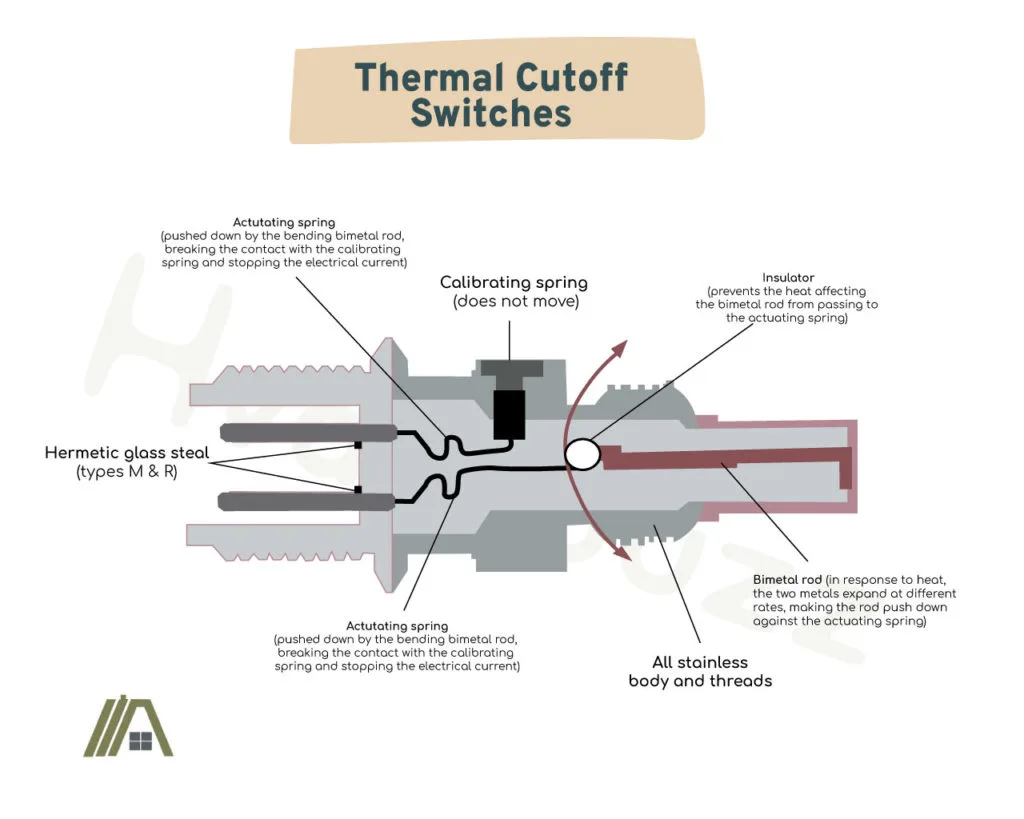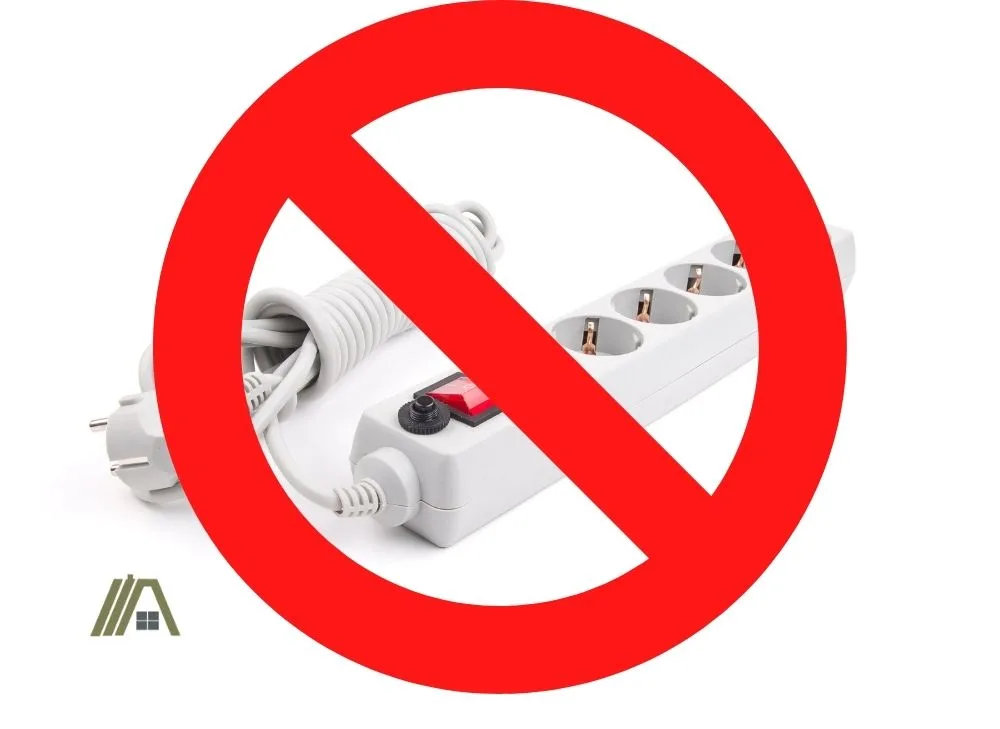To state the obvious, your dryer heating element is an integral part of your dryer. Without it, your clothes will not be dry by the end of the cycle. So, when it keeps burning out, your dryer becomes quite useless.
Dryer heating elements burn out due to overheating. Overheating is caused by various situations, some of which can be prevented by regular maintenance and some of which are difficult to avoid, but there are preventative measures as well as solutions to them all.

Dryer heating elements burn out when they overheat. Commonly causes are poor airflow, faulty temperature shut-off switches, and power surges. To prevent burn out, ensure proper and regular dryer and duct maintenance, avoid overloading the circuit, replace faulty switches, and install surge protectors.
How Long Should a Dryer Heating Element Last?
The dryer heating element can last as long as the entire appliance, but if the dryer is run often and isn’t well-maintained, it is possible that you may have to replace your heating element before the dryer itself has given up the ghost.
As long as your dryer is used a normal amount and is well-maintained, your dryer heating element should last between 8 and 18 years.

If your dryer is being run daily, which is viewed as very often for single-residence homes, then the dryer is put under more stress, making it more likely for the heating elements to burn out.
It is possible, though, for routine maintenance to prevent your dryer heating element from burning out even when used at this rate.
Additionally, not cleaning the lint trap and exhaust vents can cause your dryer heating element to burn out, even if the dryer is being used sparingly.
Heating Elements Burn out Due to Overheating
The structure of a heating element contains an uninsulated metal conductor. It works similarly to a coil in an electric heater.
An electric current passes through the conductor and the resistance of this conductor is what generates heat.
The conductor is not indestructible, though, and large amounts of heat can break it for good. This is what happens when your heating element burns out.
Overheating of your heating element can be preventable in the case of a lack of maintenance of your dryer and its ventilation.
But overheating can also be from causes you can’t control, such as power surges and faulty dryer parts.
Sometimes, if your dryer is overheating, your clothes will come out with black/brown stains, which are actually scorch marks. If you notice this happening in the cycles before your heating element fails, then overheating is a likely culprit.
3 Common Causes of Element Overheating
1. Poor Airflow
The most common cause of your dryer’s heating element burning out is blocked ventilation.
If you don’t clean out your lint traps after each dryer load and also don’t clean out your dryer vents yearly, it is likely that the system will become blocked with lint. This will lead to the overheating of your heating element.
Airflow in dryers includes both intake and exhaust. Air is usually taken in at the back of the dryer and the exhaust must vent outside. Both aspects of airflow must be operational for a dryer to be working at its best and to prevent the element from overheating.
With lint traps being full and your vents full of lint as well, this blockage of exhaust would lead to a situation where exhaust couldn’t leave the dryer fast enough. Since this exhaust is fairly hot, this could cause overheating.
Lint build-up is one of the reasons why you can’t use foil ducting for dryers.
If the intake vent is blocked off, fresh and cool air would not be able to enter the dryer to help control its temperature. This could also lead to overheating.
Additionally, when the air cannot flow properly the blower has to work harder to push it through the system. This fan motor can also overheat under such circumstances contributing to the overall temperature buildup in the dryer.
Solution
In order to solve the problem, the source must first be found.
If the back of your dryer is too close to the wall, this could cause problems with airflow into the dryer. If this is the case, you can prevent future element burnouts by shifting your dryer forward so that there is more space between the dryer and the wall for airflow.
If your intake vent has enough space and is performing well, then the problem is most likely the exhaust vent. In this case, you will have to clean out your dryer ducts.
Household items such as a dustpan brush and a shop vacuum can do some of the cleaning for you but they only extend so far. A dryer vent-cleaning kit may be necessary so that you can reach far enough into the vent.
I recommend the Smart House Inc. Dryer Vent Cleaning Kit (amazon link) for its high ratings and ease of use.
Future Prevention
The burning out of your dryer heating element can be prevented by simply placing your dryer in an advantageous position and by cleaning your dryer’s vents and lint trap regularly.
It is important to have enough space between the wall and the back of your dryer so that the intake vent has a large enough supply of air.
Cleaning your dryer’s lint trap may be a hard habit to begin, but it is a very simple way to not only increase the longevity of your heating element but also to prevent fires in your home.
Dryer vents are a bit more of a hassle to clean but they only have to be cleaned about once a year. By doing this maintenance, you are preventing dryer fires in your home and increasing the working power of your dryer.
2. Faulty Temperature Shut-off Switch
Even if the conditions of the dryer should lead to your heating elements burning out, it is possible that your heating element can be saved.

Most modern dryers are equipped with a temperature shut-off switch. This is a device that senses temperatures and if they become too high, it automatically inactivates the heating element so that it cannot burn out.
Not only can a temperature shut-off switch protect your heating element from overheating, but it can also prevent fires since the switch also protects against the entire dryer overheating.
If this switch is faulty then it will not detect the increases in temperature or it will not switch off in response to these conditions. This leads to the heating element burning out.
Solution
Before purchasing and installing a new temperature shut-off switch, it is wise to make sure that the problem is the switch and not the vents, for example.
A way to do this involves taking out the switch and testing it with a multimeter and then on a heated pan.
- After removing the switch, touch one probe of the multimeter to one prong of the switch and the other probe to the other prong.
- If the multimeter reading is 0, then the switch is definitely faulty and needs to be replaced.
- If the switch passes this test, heat a pan on your stove to a temperature that is 25 ℉ higher than the cutoff temperature printed on the switch. Place the switch on this heated pan so that the prongs are facing up.
- Touch the probes of the multimeter as you did in step 1. When the pan’s temperature reaches within 5% of this cutoff temperature, the multimeter should read 1. If it does this, it is functional. If the multimeter reads 0 past this cutoff temperature, it is likely faulty and needs to be replaced.
I recommend the SUMNEW Cut-Off Switch (amazon link) for its high reviews and compatibility with a range of different dryers.
Future Prevention
A faulty cut-off switch is not something that can be easily prevented since the fault lies with the product and not your maintenance.
Since these switches often come with heating elements, though, it is wise to invest in a quality product to avoid faulty appliances.
It is also important to note that a cut-off switch is not needed as long as the heating element doesn’t overheat. If the heating element can avoid overheating, the cut-off switch would only be needed for events out of your control.
This is why it is important to give your dryer intake vent enough space, clean your lint trap, and clean your dryer exhaust vents.
If the switch was faulty when you bought the dryer, its replacement may be covered under the warranty.
3. Power Surges
A power surge is an event where more than normal voltage comes through the wires and into the devices they are connected to. Typical voltage levels are often between 110 volts and 220 volts. Voltages higher than this range would indicate a power surge.
Power surges can occur from electrical overload, bad wiring, lightning strikes, and a jump in current due to the restoration of power after a blackout.
Your dryer heating element burning out can be caused by a power surge because this high amount of voltage would generate a high amount of heat in the heating element, causing it to fail.
Solution
The best solution for power surges, other than having to replace your heating element, would be to try to prevent damage in the future and check your dryer and other electrical appliances after the power surge has occurred.
The best course of action for responding to a power surge is to reset what devices you can, unplug them, and then turn them on. It is also important to check for damage such as burn marks or active fires.
Doing this cannot save a burnt-out heating element but can check the functionality of appliances like your dryer.
It is also important to understand the warning signs of a power surge for your own safety.
Dimming and flickering of lights, odors around electrical outlets, and smoke coming from outlets can all be warning signs. If these are occurring, it is best to move away from electrical appliances in case of a fire. Turn the circuit off at the breaker and call a professional for assistance.
Future Prevention
Utilizing surge protectors, especially with expensive electronic appliances, is important because they can protect against certain voltages of power surges.
Each surge protector comes with a voltage limit. If the power surge’s voltage exceeds this, the surge protector, unfortunately, cannot help. Despite this, they are still very valuable assets in this situation.
For gas dryers, I recommend the Belkin Power Strip Surge Protector (amazon link) for its customizability as well as its high ratings. For electric dryers, you need something that can handle a higher voltage like the CARMTEK RV surge protector (amazon link).
Faulty wiring and electrical overload are two causes of power surges that can be prevented.
If you notice that a wire is fraying, this can cause a power surge within this device. It is wise to replace wiring when it is in this condition.
Electrical overload occurs when an outlet has far too many appliances plugged into it. It can also occur from too many electrical appliances using the same circuit. Power surges can happen to each of these appliances, so it is wise to not overload outlets, extension cords, and circuits.

A broken heating element can cause your clothing to come out of the dryer with burn marks.
Sources
https://homeguides.sfgate.com/check-resistance-igniter-dryer-31689.html
https://homesteady.com/13410698/how-long-should-dryer-elements-last
https://taraenergy.com/blog/power-surge-how-they-happen/
https://homeguides.sfgate.com/heating-elements-out-dryers-62381.html


